Introduction
APIs, or Application Programming Interfaces, are vital components of software applications that enable seamless communication and data transfer between different systems. They serve as the foundation for efficient interaction by establishing a common set of rules and protocols, ensuring consistent and interpretable data across platforms. The benefits of understanding API formats are not just advantageous but imperative for developers.
It empowers them to integrate APIs seamlessly into their applications, resulting in a more robust and interoperable digital ecosystem.
In this article, we will explore the significance of API formats by examining real-world examples and statistics. We will delve into the types of API formats, including JSON and XML, and their respective advantages and use cases. Additionally, we will discuss the key components of an API format, such as endpoints and request methods, and their role in API security and functionality.
Furthermore, we will explore best practices for API documentation, tools for working with API formats, and common troubleshooting issues.
By the end of this article, you will have a comprehensive understanding of API formats and their importance in achieving maximum efficiency and productivity. So let's dive in and explore the world of APIs and their impact on software development.
Why API Formats Matter
APIs, or Application Programming Interfaces, are the lifeblood of software applications, facilitating smooth communication and data transfer between disparate systems. They set the stage for harmonious interaction by defining a common language of rules and protocols, which ensures that data remains consistent and interpretable regardless of the platform it traverses. For developers, a deep understanding of API formats is not just beneficial; it's imperative.
It empowers them to integrate APIs seamlessly into their applications, enabling a more robust and interoperable digital ecosystem.
Consider the transformation at Uber, where a large-scale invoice generation service underwent a complete overhaul. The original Python-based service, Invoice-gen, was replaced by a new Go-based service, Invoice, to handle the surging demand efficiently, at times producing over 300 PDF invoices per second. This is a testament to the critical nature of APIs in handling high-scale, real-time data processing demands.
Similarly, TotalEnergies Digital Factory illustrates the transformative power of APIs in modernizing legacy systems. By creating tailored digital solutions, they're leveraging APIs to meet the multidimensional challenges of sustainable development across a global operational landscape.
Recent statistics reveal a concerning trend: 78% of cybersecurity teams have encountered an API-related security incident within the past year. This underscores the urgency for developers to prioritize API security, as nearly three-quarters of these teams now recognize the importance of having a comprehensive inventory of APIs, especially those handling sensitive data.
The essence of robust API design lies in its dual nature: the philosophy and the mechanics. The mechanics involve consistent endpoint structures, common parameter patterns, and meticulous data validation across requests and responses. By implementing such standardization, developers can significantly improve the scalability and reliability of API interactions.
In the realm of data engineering, where the flow and integration of data are paramount, APIs are indispensable. They are the architects of data synergy, connecting databases, analytics tools, and various data sources into a cohesive system that delivers essential user functionalities.
To encapsulate the significance of understanding and implementing APIs effectively, consider the . The focus should always be on addressing the 'needs' rather than the 'wants,' ensuring that the technology developed is not just built correctly, but is also the right solution for the challenges at hand. This principle is crucial for creating APIs that are not only technically sound but also strategically aligned with the broader objectives of efficiency and scalability in software development.
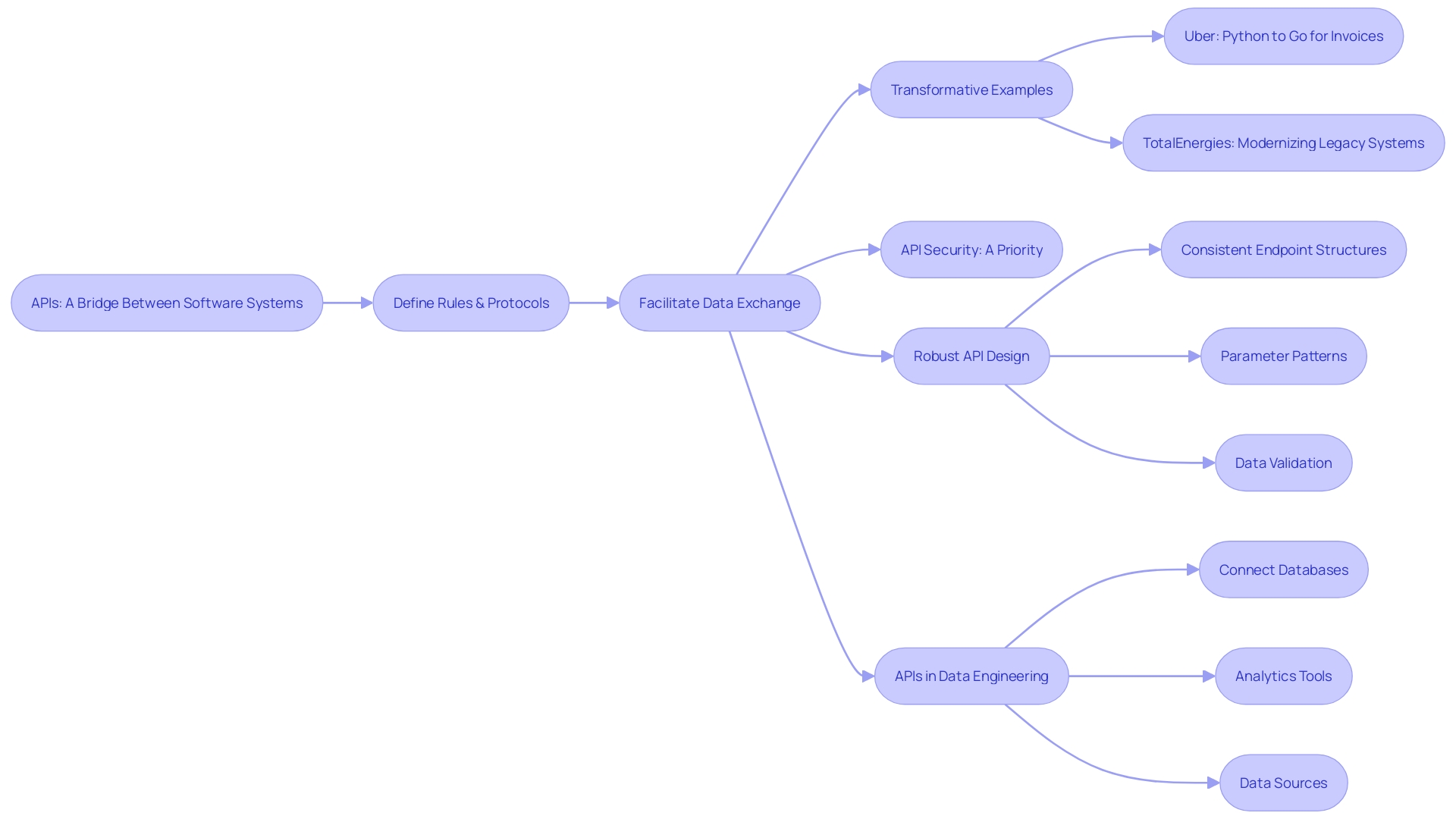
Types of API Formats
In the realm of web development, APIs are fundamental in facilitating the seamless interaction between different software systems. The choice of data format for these APIs is critical for effective communication and operation. JSON, or JavaScript Object Notation, is a widely adopted format known for its lightweight nature and ease of use by both humans and machines.
Representing structured data in a text-based format, JSON is not confined to JavaScript alone and has seen extensive adoption across various programming languages due to its simplicity and efficiency.
Another prevalent format is XML, or eXtensible Markup Language, which offers a more detailed and structured approach to data interchange. While JSON is often favored for its straightforwardness and speed, XML provides a higher level of complexity and control, which can be essential in certain use-cases where are required.
The importance of these formats is underlined by their ubiquitous presence in the industry, as evidenced by the State of Developer Ecosystem 2023 report, which draws on the experiences of over 26,000 developers. The report highlights the latest trends and developer preferences, reflecting the ongoing significance of efficient data formats in today's technology landscape.
Moreover, real-world applications of API formats are demonstrated through cases such as OAuth 2.0, a protocol enabling secure resource access across different web applications. The analogy of a coffee shop restroom with a daily-changing access code encapsulates the concept of controlled resource authorization, a principle that also underpins the structured exchange of data via APIs.
GitHub, the world's largest developer platform, exemplifies the critical role of API documentation and data formats in its operations. The company's documentation team, consisting of content writers, designers, and engineers, showcases the necessity of clear and well-maintained API documentation for developer productivity and software delivery.
Understanding the characteristics and differences between JSON, XML, and other formats is not just a technical requirement but a strategic choice that can impact the performance and scalability of applications. As developers and organizations strive to optimize their processes and products, the selection of the right API data format becomes a pivotal decision in the broader context of software development and efficiency.
JSON API Format
JSON, standing for JavaScript Object Notation, is a highly favored data format for exchanging information between a server and web application, particularly in RESTful APIs. The simplicity of JSON's syntax and its human-readable format contribute to its widespread use across various programming languages, not just JavaScript.
Understanding the of JSON is crucial for developers. It consists of two main elements: objects and arrays. Objects are collections of key-value pairs enclosed in curly braces, while arrays are ordered lists of values enclosed in square brackets.
Each key-value pair in an object is separated by a comma, and the key is always a string followed by a colon and then the value, which can be a string, number, boolean, array, object, or null.
APIs, or Application Programming Interfaces, play a significant role in web development, acting as intermediaries that allow different software applications to interact seamlessly. An API outlines the methods and data formats applications use to communicate. The API-first approach emphasizes the importance of designing these interfaces at the outset, ensuring they are consistent, reusable, and of high quality.
The benefits of this approach include broader adoption, developer-friendliness, and compatibility with diverse systems.
OAuth 2.0, an authorization standard, exemplifies the application of APIs in security. It permits a website or application to access resources on behalf of a user, much like a restroom code in a coffee shop that's only available to paying customers. This analogy illustrates how OAuth 2.0 ensures that only authorized clients can access certain functionalities, highlighting the importance of secure and well-defined API practices.
In the realm of data engineering and big data, APIs are indispensable, facilitating the flow of data between disparate systems and ensuring efficiency and scalability. As developers and data engineers look to optimize the performance of their applications, a deep understanding of JSON and its role in API development is essential. JSON’s design makes it not just a tool for data representation but also a critical component for effectively managing data in applications and databases.
In summary, JSON’s role extends beyond data interchange; it is central to the modern web development ecosystem, influencing how data is stored, communicated, and managed across applications and services.
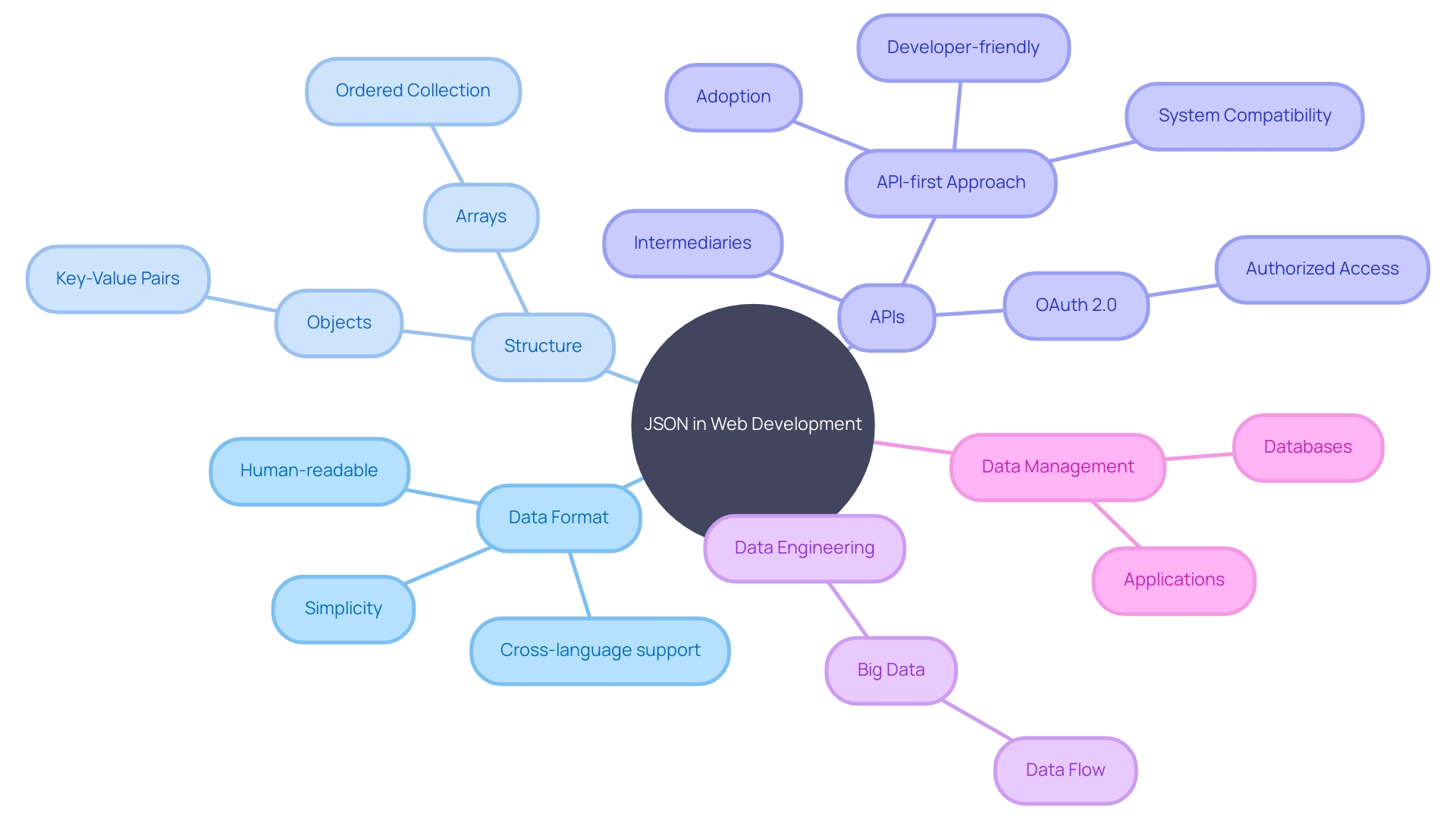
XML API Format
XML, or eXtensible Markup Language, is a robust format utilized for representing structured data. With its hierarchical organization, it is particularly advantageous for data interchange among diverse systems, allowing for precise data manipulation and communication. XML's structured nature facilitates the creation of a clear, that can be easily processed by machines, while remaining human-readable.
An API, or Application Programming Interface, is a foundational element of software development, providing a set of protocols and tools for building applications. APIs allow different software components to communicate seamlessly, exchanging data and services efficiently. XML APIs, therefore, offer a standardized method to encode the data, ensuring that the information conveyed is both consistent and reliable.
Notably, APIs have been a game-changer in the digital era, transforming how businesses operate. For example, the Ford Foundation recognized the need to enhance their content management system to better serve their audience and streamline their publishing workflow. Similarly, when considering the release of annual data files, the community's input on preferred data formats, such as XML, is invaluable to address unanticipated use cases.
The significant role of APIs in today's software ecosystems is underscored by their ubiquity in powering applications we use daily. However, this reliance also introduces vulnerabilities; a recent study revealed that 78% of cybersecurity teams have faced an API-related security incident in the past year, underscoring the critical need for robust API security measures.
XML APIs exemplify the evolution of data exchange protocols, which began with EDI in the 1960s. As technology advanced, the limitations of EDI spurred the development of more dynamic and flexible protocols like XML, enhancing real-time communication and integration across platforms. This evolution reflects the ongoing innovation in data exchange, ensuring that organizations can navigate the complexities of modern data interchange with clarity and confidence.

Other API Formats
Beyond the well-known JSON and XML, the world of API formats is quite diverse, catering to specific needs and facilitating a range of functionalities. YAML, for example, shines with its , making it a preferred choice for configuration files and data exchange where readability is key. Its simplicity and ease of use align with the notion of API-design-first, allowing developers to focus on more creative tasks rather than being bogged down by complex syntax.
Protocol Buffers, developed by Google, offer an efficient, language-neutral, and platform-neutral way to serialize structured data, much like XML, but smaller, faster, and simpler. They are especially beneficial when the application requires high-speed communication and a strict contract between client and server, often used in internal communication protocols.
GraphQL has emerged as a transformative technology that empowers developers to request precisely what they need, making it incredibly efficient for complex systems and microservices. It aligns with the API-first philosophy, providing a more versatile control to end-users by enabling them to query multiple data sources in a single request. As articulated by industry experts, GraphQL's capability to fetch data in a more structured way without over-fetching or under-fetching enhances the developer experience significantly.
YAML, Protocol Buffers, and GraphQL stand as testaments to the evolving API landscape, driven by the demand for more efficient and effective developer tools. With the State of Developer Ecosystem 2023 report highlighting that 77% of developers use AI tools like Chat GPT, the importance of selecting the right API format that complements such advanced tools becomes even more pronounced, ensuring seamless integration and optimal performance.
Key Components of an API Format
APIs, or Application Programming Interfaces, are the conduits that enable different software programs to exchange data, acting like a common language that allows applications to communicate efficiently. Their architecture is essential for developers who want to build or integrate diverse functionalities into their applications. The structure of an API includes several critical elements.
First are the endpoints, which are specific URLs where API requests can be sent. These endpoints are akin to addresses that guide data to the correct location.
Next, the request methods define the type of operations that can be performed, such as GET to retrieve data or POST to send new data. Headers in an API request hold additional information such as metadata, authentication tokens, or instructions about the data being sent or requested. Then, authentication mechanisms are employed to ensure that only authorized users can access the API, thus protecting sensitive data and functionalities.
Understanding and implementing these components correctly is . As per recent reports, a significant number of cybersecurity incidents have been related to APIs, underscoring the importance of mastering API development for security and efficiency.
The intricacies of API elements may seem daunting, but with a clear understanding of each one's purpose and function, developers can create robust and secure APIs that power today's data-driven applications. As an analogy, consider how an ATM interface allows customers to interact with their bank; APIs facilitate a similar interaction between software applications, each serving a specific role to complete the transaction. With the rise of API breaches, it's more important than ever to ensure these elements are well-designed and secure.
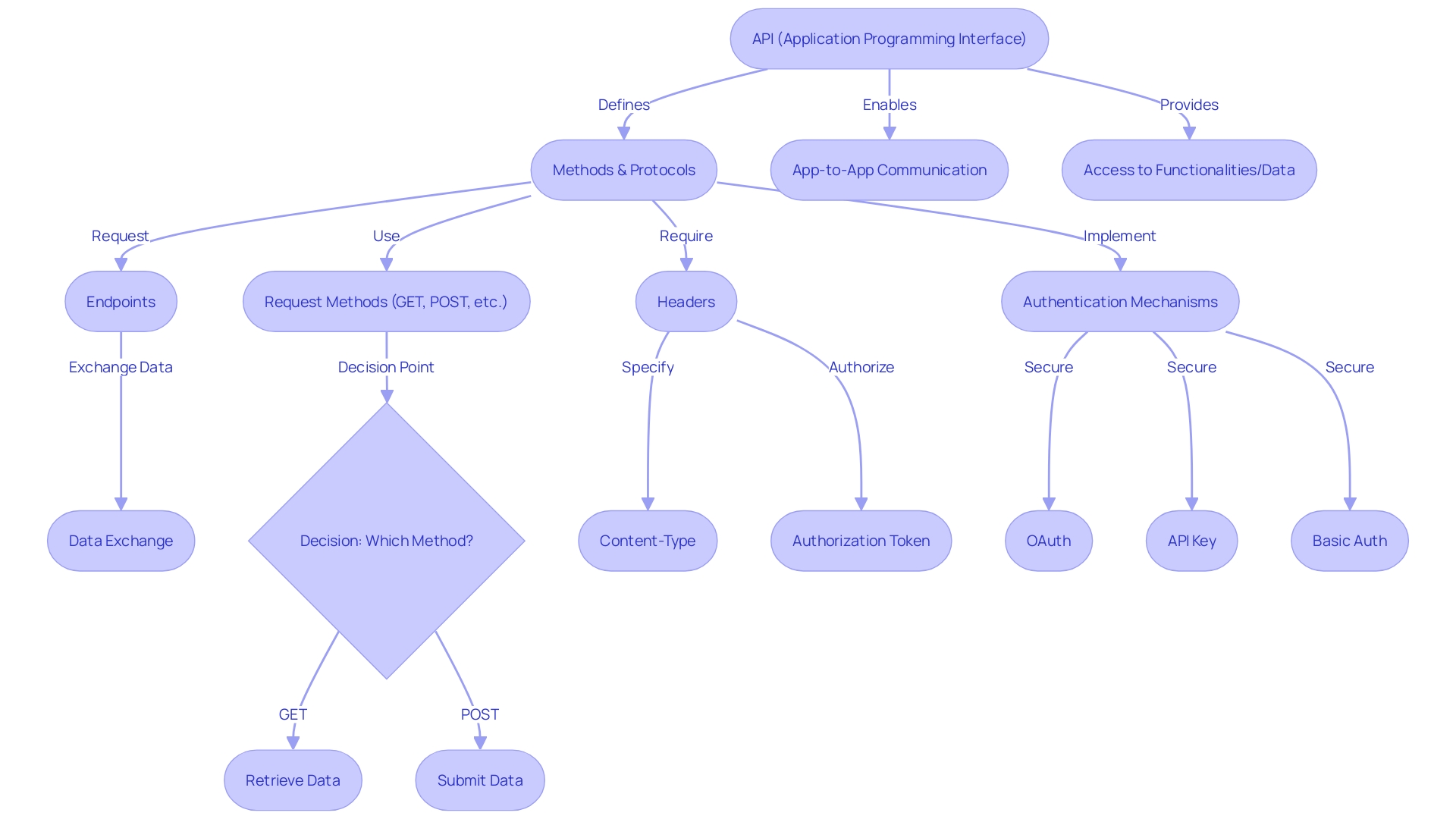
Endpoints and Request Methods
APIs, as the technological linchpins of modern software, enable diverse applications to converse fluently in the digital realm. They are the architects of innovation, opening up a world where data and functionalities intermingle seamlessly across platforms. Consider APIs the translators in a multilingual conference, bridging the gap between disparate software dialects.
In the intricate dance of API integration, understanding endpoints and request methods is akin to learning the basic steps. Endpoints are the specific addresses where APIs listen for requests, the meeting points where applications knock on the door to exchange data. Each endpoint is tailored to a particular function within the API's repertoire.
The request methods—GET, POST, PUT, DELETE, and others—are the verbs of the API language, defining the nature of the interaction. A GET request might be a polite inquiry for information, while POST could be the introduction of new data into the system. PUT requests often update existing information, and DELETE, as its name implies, removes it.
Take the process of crafting a new Trello card, for example. By consulting Trello's documentation, one would use a POST request to the 'Create a new Card' endpoint. This is akin to to submit new information, which the API then processes to produce a brand-new card on your Trello board.
But integration isn't without its challenges. As Aluisio, a seasoned software engineer, points out, not all companies shine when it comes to documentation. The key is to establish a dedicated documentation section—be it a Wiki, a 'docs' folder, or a Notion page—where everything from partner documentation links to crucial contacts is meticulously chronicled.
The value of robust API integration can't be overstated. It's the adhesive that binds systems, allowing real-time data and resource sharing. And with 78% of cybersecurity teams reporting API-related security incidents in the past year, the importance of secure, well-documented APIs is more pronounced than ever.
So, as we delve into the world of API integration, let's embrace the powerful potential of well-defined endpoints and request methods, ensuring they serve as secure and efficient conduits for innovation and seamless software interaction.
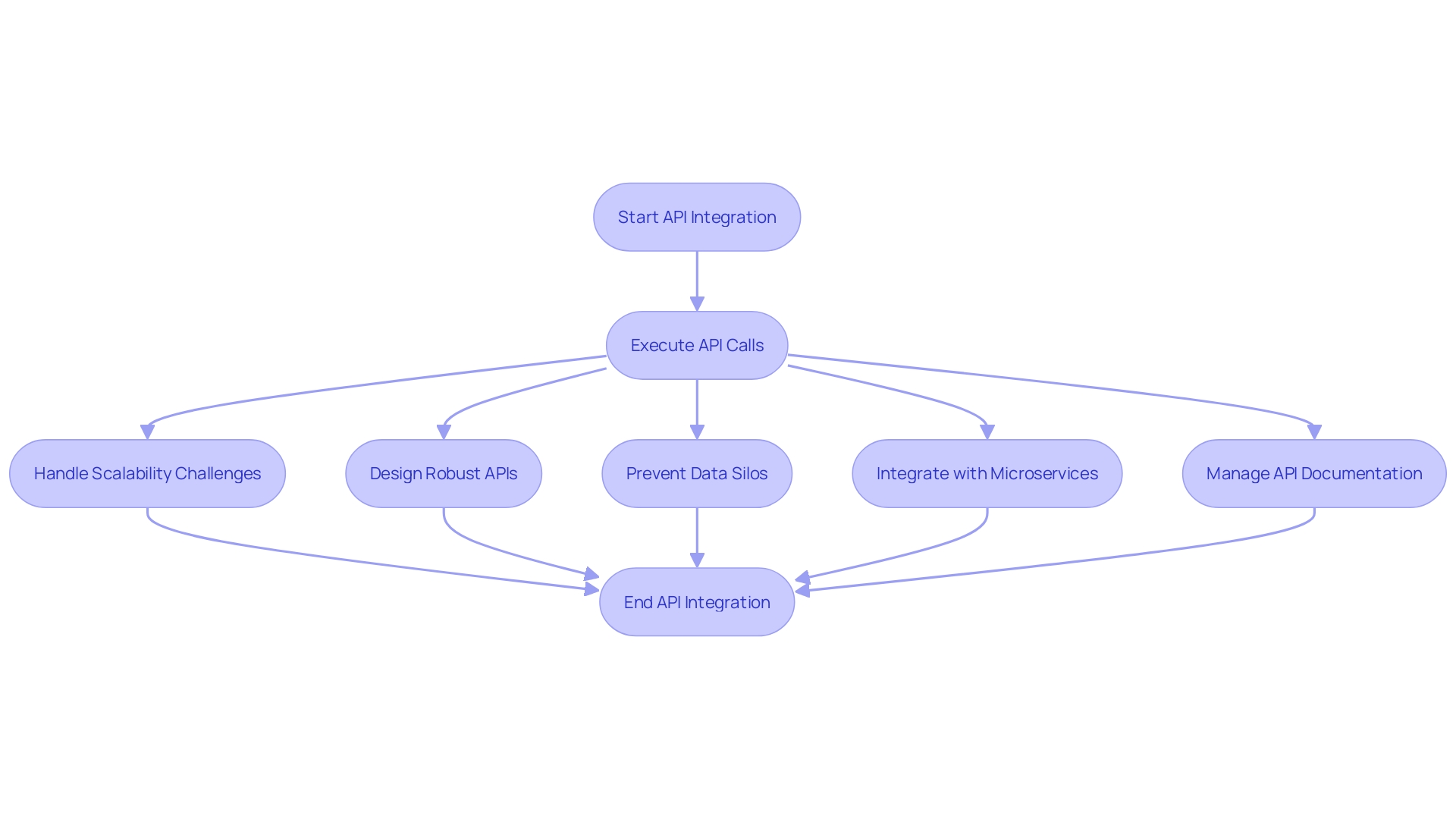
Request and Response Bodies
When for an API, it's essential to structure the data in a way that's not only clear and concise but also actionable for the client and server. Structured correctly, these bodies can effectively communicate serialization, deserialization, and data validation processes. A well-documented API error, for instance, should inform the user of what went wrong and provide enough context for them to rectify the issue—or understand that no action is needed.
Considering the complexity and variety of errors that can occur due to the unpredictable nature of the internet, APIs must anticipate and handle these issues with precision. Take the example of the Noname and Akamai API Security integration, which underscores the growing necessity for robust security in an era where APIs shape our daily digital interactions. By ensuring that API errors are comprehensively documented, developers can avoid the 'Wild West' of error formats that have historically plagued system interoperability and developer productivity.
Microsoft and SmartBear serve as beacons in the industry, demonstrating a commitment to community support and ethical practices. Their approach to API documentation and error handling reflects a broader responsibility to enhance the technological ecosystem. This ethos is echoed by experts who recognize the need for APIs that not only facilitate data exchange but do so reliably and efficiently, thus empowering applications to perform seamlessly.
In summary, the request and response bodies must be meticulously structured, leveraging standardized protocols and definitions to ensure clarity and actionability. By addressing the intricate details of API communication, such as error handling and security, developers can forge a path toward more efficient and interoperable software applications.
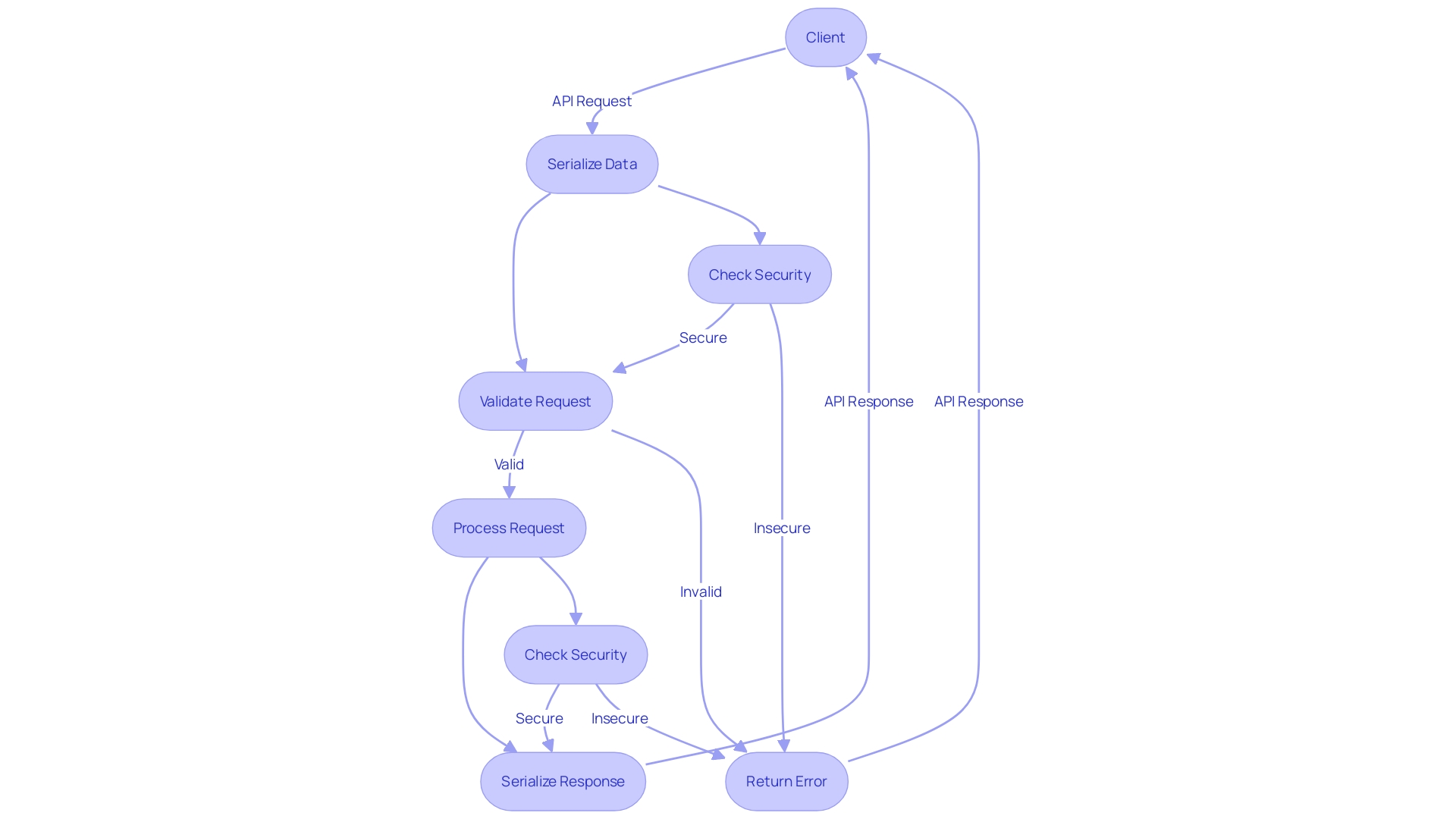
API Documentation Best Practices
Crafting top-notch API documentation is akin to providing a lifeline for developers, ensuring they can effectively harness the full potential of an API. It's a pivotal resource that needs to address the core questions and concerns that users may have when encountering your API for the first time. It's not just about listing endpoints and parameters; it's about weaving a narrative that clarifies what your API is, the problems it solves, and how it can be seamlessly integrated into existing projects.
The fundamental elements of excellence in API documentation include clarity, simplicity, and completeness. The language used should be straightforward, minimizing jargon, or at least demystifying it with clear definitions or links to a glossary. It's imperative to cover all necessary details, such as endpoints, methods, parameters, expected responses, and error codes.
Moreover, ensure that error messages within your documentation are informative and up-to-date, serving as a direct line of communication to your users.
For a more engaging and user-friendly approach, break down your documentation into digestible sections or chapters, each covering different facets of your API. Use to guide users through the information, enhancing the readability and allowing for quick access to specific topics. A logical progression of content, beginning with the basics and then delving into more complex concepts, aids in building a strong understanding of the API's capabilities.
A compelling example of user-focused documentation can be seen with Infobip API, which includes beginner-friendly links to complex concepts, ensuring that all users, regardless of their experience level, can grasp the full context of the API's functionality. The significance of this approach is supported by the Developer Experience Lab's research, which emphasizes that enhancing the developer's experience is crucial for sustaining productivity and software quality. This aligns with the view that API documentation is not just a manual but a pivotal part of the developer's environment, meriting the same attention and care as the API itself.
In summary, your API documentation should be a clear, complete, and user-friendly companion that empowers developers to quickly understand and efficiently utilize your API, enriching their overall experience and facilitating the creation of robust digital solutions.
Tools for Working with API Formats
Developers are continuously seeking innovative ways to handle API data across various formats, striving to boost their efficiency and output. Popular tools and libraries are indispensable for parsing, validating, and manipulating API data, which can dramatically smooth out the development workflow. Recognizing the sage advice of J. Vester to "focus your time on delivering features/functionality that extends the value of your intellectual property," developers should harness existing frameworks and services to circumvent reinventing the wheel.
Python, often chosen for new microservices, exemplifies this mentality, with the majority of code derived from community-driven sources like Stack Overflow or AI-assisted tools such as ChatGPT.
Meanwhile, the technical challenges posed by platforms like Spotify's Backstage highlight the need for flexible tools in API development. Issues like fixed data models, manual data ingestion, and rigid plugins can introduce unnecessary complexity and inefficiency. On the flip side, services like Zapier showcase how automation and app integration can scale success, underlining the significance of choosing the right tools to suit specific requirements and workflows.
When it comes to API documentation, the philosophy of transparency reigns supreme, as detailed by experts advocating for . The goal is to create APIs that are not only functional but also intuitive for developers to use, aligning with the product mindset of treating APIs as first-class citizens in the digital product space.
In our digitally interconnected realm, APIs are the linchpins of software applications, serving as the communication channel between disparate systems. The tools we discuss here are designed to construct, manage, and optimize these vital interfaces, enabling the seamless operation that modern software demands. By embracing these resources, developers can focus on creating value through their intellectual property, leaving the heavy lifting to the robust frameworks and services at their disposal.
Common Use Cases for Different API Formats
APIs, or Application Programming Interfaces, serve as crucial bridges between software applications, allowing for seamless communication and data exchange. The selection of an API format can significantly impact the functionality and performance of web applications, system integrations, and other digital solutions. JSON (JavaScript Object Notation) is widely favored for web applications due to its lightweight nature and ease of use with JavaScript, enhancing both developer productivity and system performance.
Conversely, is often chosen for its robust structure in complex data exchange scenarios between disparate systems, ensuring data integrity and extensibility.
The development and maintenance efficiency of APIs are paramount, especially in an era where API-as-a-Service (PaaS) platforms are emerging to streamline these processes. These platforms offer the dual benefits of cost reduction and simplification, allowing developers to deploy and manage APIs with greater agility.
However, it's not just about choosing the right format; it's about understanding the needs of the system and its users. As highlighted in the lessons learned from building enterprise platforms, focusing on user needs rather than wants can lead to the development of more effective APIs. This user-centric approach, coupled with an API-first development strategy, ensures that the APIs built are not only technically sound but also genuinely address the real-world requirements of the software ecosystem.
In the spirit of building right, developers must consider not just the current use cases but also the potential for future integration and scalability. As we navigate the complexities of API development, it's clear that a thorough understanding of both the technical aspects and the strategic implications is essential for crafting APIs that stand the test of time and deliver tangible benefits to users.
Troubleshooting Common Issues with API Formats
Navigating the intricacies of API formats is essential, as errors are an inevitable part of the process due to the unpredictable nature of internet data transfer. Clear, comprehensible, and resolvable errors are paramount to efficient API integration. Implementing standards like the Problem Details for HTTP APIs or ensuring consistent error response formats can greatly improve error handling.
HTTP status codes offer a snapshot of the response's nature, with 2xx codes indicating successful interactions. Companies like TotalEnergies Digital Factory rely on well-structured APIs to drive their digital transformation, underscoring the importance of robust API design in modern business strategies. Industry leaders, such as SmartBear, actively contribute to the tech community, demonstrating the significance of ethical practices and social responsibility in fostering a better technology-driven world.
We will examine expert insights and real-world applications to enhance our understanding of effectively.
References
Crafting API documentation is akin to providing a detailed user manual for a new piece of technology. It's the blueprint that makes software integrations possible and understandable. The importance of this documentation cannot be overstated; it's the translator between different software realms, enabling them to converse and work together seamlessly.
When developers sit down to document an API, they must prioritize clarity and simplicity. Complex jargon should be avoided, or at least coupled with clear explanations, ensuring that even beginners can grasp the concepts without stumbling. A complete documentation covers all bases: endpoints, methods, parameters, and possible responses.
It's a comprehensive guide that users and developers can turn to not only to understand but also to troubleshoot and implement the API effectively.
API documentation also serves as a primary channel of communication with users. Status and error codes, if clearly explained, can provide immediate assistance during integration. These messages need to be maintained and kept current to prevent them from becoming obsolete, thus serving as an extension of the documentation itself.
Considering the case of Infobip's API reference, which includes links to concepts that may be challenging for novice developers, it's clear that compassion in writing is essential. Providing additional resources or explanations ensures that users of all skill levels are catered to and can navigate the API with confidence.
Moreover, the emergence of API documentation tools has revolutionized the way these documents are created and maintained, making the process more accessible and efficient. However, the selection of the right tool can be daunting, given the vast array of options available. The chosen tool should not only aid in creating readable documents but also simplify updates and maintenance.
Finally, it's crucial to remember the audience for whom the documentation is intended. Whether it's for a team familiar with the project, an end-user, or a newcomer, the documentation should offer an that sets the stage for further exploration. This ensures that any reader, regardless of their prior knowledge, can step into the project with a clear understanding of its workings, much like explaining your job to a grandparent with no context.
Conclusion
In conclusion, API formats are essential for seamless communication and data transfer between software systems. Understanding API formats empowers developers to integrate APIs seamlessly, creating a robust and interoperable digital ecosystem. The choice of API format, such as JSON or XML, is critical for effective communication.
Key components like endpoints and request methods play a crucial role in security and functionality. Effective API documentation is necessary to harness the full potential of an API. Using tools and libraries can streamline API data handling, improving efficiency.
Troubleshooting common API format issues is vital for efficient integration. Overall, a comprehensive understanding of API formats is key to achieving maximum efficiency and productivity in software development. Developers can create robust and interoperable applications by selecting the right format, understanding key components, following best practices for documentation, and using appropriate tools.
Frequently Asked Questions
What are APIs and why are they important?
APIs, or Application Programming Interfaces, are sets of protocols and tools that allow different software applications to communicate with each other. They're important because they enable data exchange and functionality sharing between disparate systems, making software more interoperable and versatile.
What is an API format?
An API format refers to the data format that an API uses to exchange information between applications. It defines the structure of the data and how it should be encoded and decoded.
Why is it imperative for developers to understand API formats?
Understanding API formats is crucial for developers to integrate APIs seamlessly into their applications, ensuring data consistency, improving scalability, and addressing security concerns.
What are the main types of API formats and their uses?
The main types of API formats are JSON (JavaScript Object Notation) and XML (eXtensible Markup Language). JSON is used for its lightweight nature and ease of use, while XML offers a detailed and structured approach for complex data interchange.
How can the choice of API format affect an application?
The choice of API format can impact the application's performance, scalability, and ease of development. Selecting the right format can make data exchange more efficient and help maintain system performance.
What are some common issues related to APIs?
Common issues include security vulnerabilities, which can lead to unauthorized data access, and integration challenges, such as difficulty in understanding the API's documentation or troubleshooting errors.
What is JSON and why is it widely used?
JSON is a data format that is human-readable and easy to understand. It is widely used because of its simplicity and compatibility with various programming languages, making it ideal for web applications.
What is XML used for?
XML is used for representing structured data, allowing for precise manipulation and communication of data between systems. It is particularly useful in scenarios that require a high level of data complexity and control.
What other API formats are available besides JSON and XML?
Other API formats include YAML, which is human-readable and good for configuration files, Protocol Buffers, which are efficient for serialized structured data, and GraphQL, which allows for precise data fetching in complex systems.
What are the key components of an API format?
Key components include endpoints (URLs where requests are sent), request methods (GET, POST, PUT, DELETE), headers (additional information), and authentication mechanisms (ensuring authorized access).
What is API documentation and why is it important?
API documentation is a comprehensive guide that explains how to interact with an API. It's important because it helps developers understand and use the API effectively, which is crucial for integrating and troubleshooting.
How can developers troubleshoot common issues with API formats?
Developers can troubleshoot issues by understanding HTTP status codes, ensuring error messages are clear, and using standardized error response formats. It's also important to have well-documented APIs to guide through troubleshooting.
What role does API security play in development?
API security is crucial to protect sensitive data and prevent unauthorized access. Developers must prioritize security measures in API design and maintain a comprehensive inventory of APIs, especially those handling sensitive information.
Can you explain the analogy of the coffee shop restroom code with API usage?
The coffee shop restroom code is an analogy for OAuth 2.0, which is a protocol for secure resource access. Just like a restroom code is given to paying customers, OAuth 2.0 ensures that only authorized clients can access certain API functionalities.
What are some best practices for API documentation?
Best practices include clarity, simplicity, and completeness in documentation; using language that is easy to understand; covering all necessary details; and organizing content logically to improve the developer experience.
What tools are available for working with API formats?
There are many tools and libraries available for parsing, validating, and manipulating API data. Some examples include Python libraries for microservices, AI-assisted tools like ChatGPT, and automation services like Zapier.




